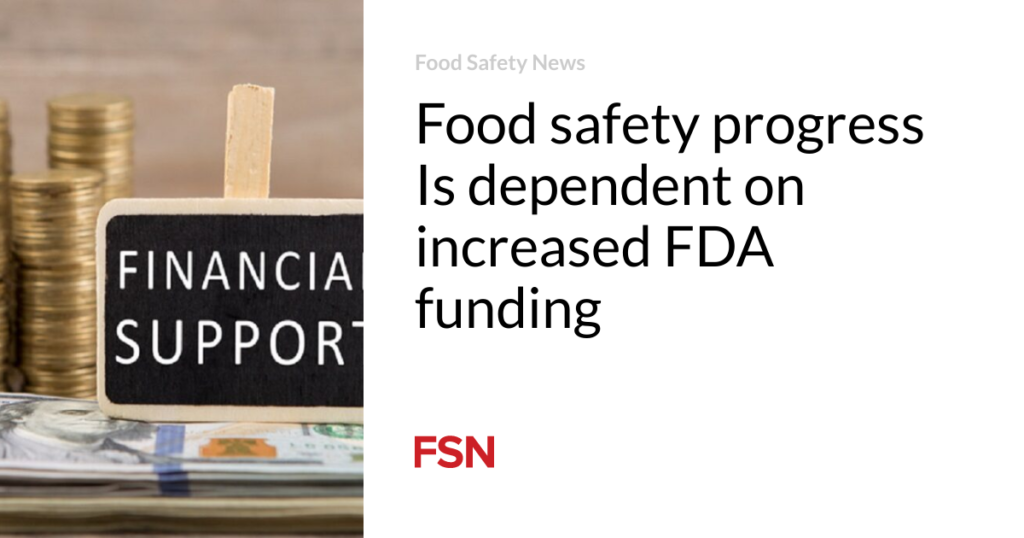— OPINION —
By Steven Grossman, Executive Director of the Alliance for a Stronger FDA
Consistent with the overall discretionary spending targets set forth in last year’s budget agreement, the President’s FY 25 budget request for FDA is substantially less than his FY 24 request. As a result, all of FDA is at risk for another lean year in FY 25.
For already-underfunded food safety programs at FDA, this is a particularly bad harbinger that is coming just as new investments are most needed.
The multi-stakeholder Alliance for a Stronger FDA advocates on behalf of the entire stakeholder community. We just announced our FY 25 FDA funding “ask” (here), which provides Congress with insight into FDA’s needs.
We call for a budget authority (BA; non-user fee) appropriation of $3.896 billion for salaries and expenses (S&E). This is $214 million more than the President’s FY 25 budget request and $377 million more than the FY 24 funding level. While these numbers may seem particularly large, it is in part because the agency needs $115 million in FY 24 just to pay for mandatory pay raises.
Accordingly, the Alliance’s request for FY 25 is heavily focused on the program areas that most need attention in FY 25 (which starts October 1, 2024).
Working with Alliance members interested in HFP, CFSAN, and CVM food safety, we have urged Congress to fund the following food-related programs:
Food Chemical Safety. A robust food chemical safety/post-market review program is a pressing need that is supported by a broad range of consumer and industry stakeholders, many of whom view it as their highest food safety funding priority. Additional funding–well beyond the President’s budget request—is needed to ensure rigorous and timely review of chemical and toxicological issues now pending before the agency, including twenty-one chemicals currently prioritized for reassessment. Such reviews can take many months to complete, so there is an urgency to get started and a need for substantial funding in FY 25.
Rule Implementation and Prevention Activities. FDA, state partners, and industry are currently working to implement the traceability rule and are anticipating upcoming changes to agricultural water standards. This, combined with advancements in the scientific understanding of the root causes of food contamination make it important for FDA to maintain and grow efforts to work with state regulators and industry stakeholders to implement standards and practices that can improve food safety.
Cooperation with State and Local Governments. FDA’s cooperative relationships with state and local regulatory programs (including state human and animal food testing laboratories) have been extremely valuable and should be sustained and made more predictable. In many instances, the agency achieves better coverage at lesser expense by having a state and local presence.
Establishing Nutrition Center of Excellence. The planned reorganization of the Human Foods Program includes the establishment of a Nutrition Center of Excellence. Given the relatively small size of the current nutrition program at FDA, additional funds will be needed to realize the vision for nutrition in the new organization. Priorities include children’s health, chronic disease, and consumer-facing food labeling.
Enhancements in Risk-Based Targeting of Foods and Animal Health Program Oversight Activities. As the agency restructures to establish a new Human Foods Programs, additional resources (advanced data systems, external data sets, and data scientists) are needed to create a data-driven foundation to improve risk-based oversight and surveillance activities in both human foods and animal food and drugs. More substantial investments in FY 25 could also help to accelerate work planning and data sharing with state regulatory partners.
For more information, go to the Alliance’s website: www.strengthenfda.org.
(To sign up for a free subscription to Food Safety News,click here)

